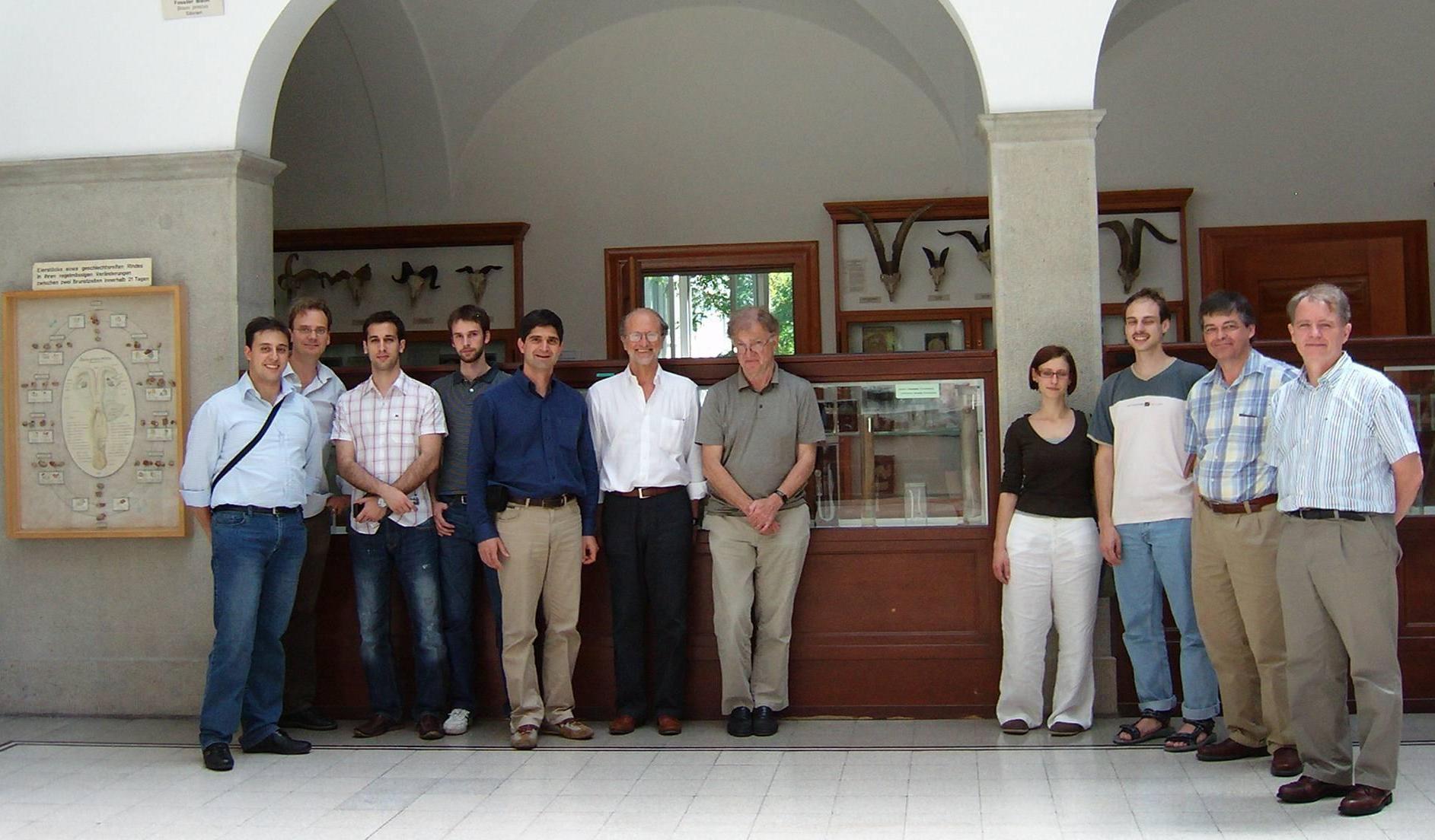
|
The Lampetra consortium is composed by five partners having international reputation in their research fields, namely:
- Scuola Superiore Sant'Anna (SSSA; Italy, Project Coordinator);
- Karolinska Institutet (KI; Sweden);
- Ecole Polytechnique Fédérale de Lausanne (EPFL; Switzerland);
- Royal Institute of Technology (KTH; Sweden);
- Centre de Recherche INSERM U862 (U862; France).
A concise biographical sketch of the main researchers leading the involved aforementioned groups is reported below.
Prof. PAOLO DARIO (Project Coordinator) is Professor of Biomedical Robotics, head of CRIM. He carried out research in the field of medical robotics, humanoid robotics and biomimetics since the late 1980s and he is now considered a major promoter in the research field of Bio-Robotics. Currently Past-President of the IEEE Robotics and Automation Society and Co-Chair of the Technical Committees on Bio-robotics and on Robo-ethics of the same Society, he promoted the 1st IEEE RAS/EMBS Conference on Biomedical Robotics and Biomechatronics (BioRob 2006, General Chair) and he recently served as General Co-Chair of the IEEE International Conference on Robotics and Automation (ICRA 2007).
He is the author of more than 200 scientific papers (more than 80 on ISI Journals).
Editor-in-Chief, Associate Editor and member of the Editorial Board of many international journals, he is IEEE Fellow and recipient of many honours and awards, such as the Joseph Engelberger Award.
|
Prof. STEN GRILLNER is the director of the Nobel Institute for Neurophysiology.
Cand. Med. (1962); Dr of Medicine - PhD Neurophysiology, University of Göteborg and Docent in Physiology, University of Göteborg.
Member of 14 editorial boards (past and present) including Neuron, European Journal of Neuroscience (receiving editor), Current Opinion in Neurobiology; Chairman Advisory Boards, RIKEN Brain Science Institute, Tokyo.
Member of Academiae Europaeae (1990 -), Royal Swedish Academy of Science ( 1993 - ); American Acad. of Arts and Sciences (2004- ), Institute of Medicine of National Academy (US; 2006 - ), Spanish Acad. Of Medical Sciences (2006 - ); Grass lecturer, Soc. Neurosci. 1983, Greater Nordic Fernstrom award 1990,Recipient of Bristol-Myers Squibb award Distinguished achievement in Neuroscience Research, New York 1993, Reeve-Irvine medal 2002, Ipsen Plasticity price (2003), Ralph Gerard Prize 2005.
|
Prof. AUKE IJSPEERT is the director of BIRG. He is also affiliated to the University of Southern California. He has a BSc/Msc in physics from the EPFL and a PhD in artificial intelligence from the University of Edinburgh. He has done postdocs at the EPFL and the University of Southern California. His research interests are at the intersection between robotics, computational neuroscience, nonlinear dynamical systems, and machine learning. He uses numerical simulations and robots to get a better understanding of the functioning of animals, and inspiration from biology to design novel types of robots and adaptive controllers. He has published over 60 peer-reviewed articles, and is regularly invited to give presentations on these topics. With his colleagues, he has received the Best Paper Award at ICRA2002, and the Industrial Robot Highly Commended Award at CLAWAR2005. He was the Technical Program Chair of 5 international conferences (BioADIT2004, SAB2004, AMAM2005, BioADIT2006, EPFL-LATSIS2006), and has been program committee member of over 25 conferences. He collaborates in the EU Project "RobotCub" and has been primary investigator for 8 research grants (US and Swiss NSF, Microsoft Research Cambridge, EPFL).
|
Prof. ÖRJAN EKEBERG has a permanent position as Docent in Computer Science and is co-leader of the computational neuroscience group at KTH. He is a MSc in engineering physics and a PhD in computer science. His research is focused on modelling neuronal networks and neuro-mechanical interaction on levels close to neurophysiology. He was one of the first to simulate coupled neuro-mechanical models and is currently developing and studying models of swimming and walking animals in collaboration with biologists and neurophysiologists. He is also associated with the Stockholm Brain Institute where he is developing the software for large scale neuronal simulations. In 2001-2002 he was a resident fellow at the Institute for Advanced Study in Berlin. In 2007 he received the Best-Teacher Award ("Slipsen") of the School of Computer Science and Communication.
|
Prof. JEAN-MARIE CABELGUEN (University Bordeaux I) is active in the field of the neural control of locomotion since 30 years, and has turned to the salamander in 1994. He has a BSc/Msc in Physics from the University P. et Marie Curie (Paris, France), and a State Doctorate in Neurobiology. He has done a postdoc at the University of Montreal (Montreal, Canada). He combines behavioural studies and immunochemistry to intra- and extra- cellular electrophysiological techniques to investigate the salamander locomotor network. His studies have provided critical data regarding: i) the patterns of activation of limb and axial muscles during swimming and stepping; ii) the organisation of the spinal locomotor network; iii) the switching between stepping to swimming. He has published a tenth of peer-reviewed articles about salamander locomotion, is regularly invited to give seminars, and has obtained public and private financial supports. He is referee for several Neuroscience journals and research fundings.
|
|

